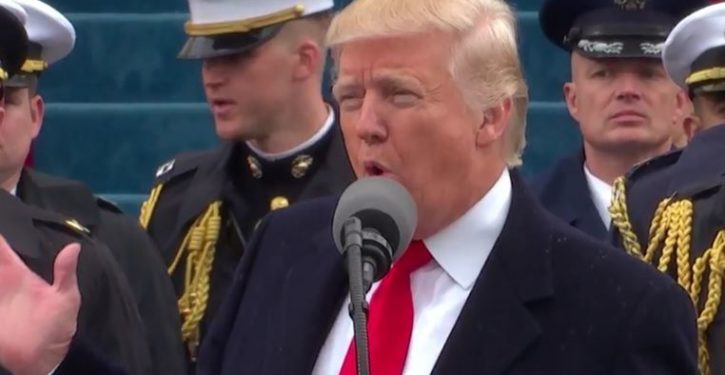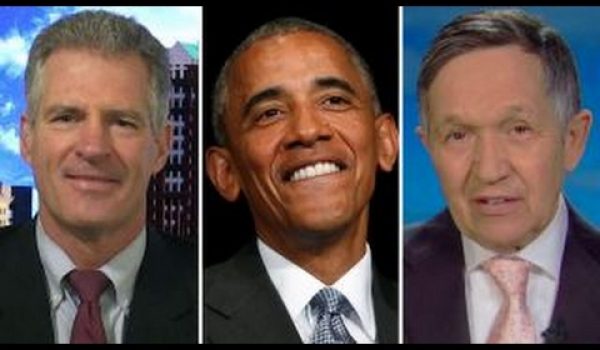
Different Americans are seeing the fight over Trump’s executive order on immigration through very different eyes. And although this is a big topic – the different eyes, more than the immigration order – involving far too much to put in one post, I want to get a shot across the bow on this one.
On one side of the divide, there are the people who are waiting for the stately, predictable kabuki dance of political rhetoric and media coverage to function as their minds say it’s supposed to. It’s a familiar convention we have lived by for the last 80 years. For these people – many of them goodhearted and intelligent – it is actively distressing that the kabuki dance isn’t proceeding as they expect. Their eyes see disruption and unexpectedness, and it’s throwing them for a loop.
On the other side of the divide are the Trump voters. Unlike the distressed people, the Trump voters cut their mental ties with the kabuki dance months or even years ago. They see that the mainstream media are in charge of the dance, and that there is no winning role in it for anyone who represents their interests. So the Trump voters have a different set of expectations. They’re not looking for the same clues that things are going well, or poorly.
Will this presidential election be the most important in American history?
And that’s why they’re not impressed by how affronted the kabuki dancers are about Trump’s cowboy posse, which is now on the move in the realm of action – not scripted gestures – and is making things happen, offstage.
To the kabuki dance, all real action – surprise, improvisation, material changes of circumstance, even just moving around offstage – looks like an out-of-control mess.
But it doesn’t look like a mess to the cowboy posse. It looks like a campaign in progress. A campaign always has to fight for gains and deal with obstacles. It’s dynamic, an ever-shifting interplay of tensions and momentum whose outcome is not predetermined. Obstacles and fights aren’t evidence that something is wrong – they’re evidence that something is happening.
The political kabuki dance, by contrast, is heavily pre-scripted, and has been used in recent decades mostly to prevent anything from happening.
In fact, the mainstream media at the moment are struggling with all their might to impose the restrictive choreography of the kabuki dance on the unchoreographed movements of the Trump administration.
The Trump administration isn’t fighting back ineffectually from an assigned position on the kabuki stage, using the forms of kabuki. It’s cowboying, not dancing. It’s operating in a different plane, making real things happen.
Trump voters’ eyes are looking for the action clues, not the conventional kabuki-dance clues – which they long ago gave up on as deceptive anyway. That’s why they’re not freaking out over what they’re seeing.
A tactical action view of the immigration order situation
From the action perspective, Trump was smart to surprise his policy opponents by implementing the immigration order without building into it any periods of negotiation, deliberation, or grace. Doing that would have merely given his policy opponents time to avert implementation entirely, by rushing to file lawsuits and introduce bills in Congress before anything could actually happen.
Building certain delays into the process is something a lot of Trump’s friendly critics have suggested he should have done. But they’re thinking in kabuki-dance terms. Team Trump was planning in action-campaign terms.
Trump set the terms of the policy confrontation by making sure he had the element of surprise, and bringing off the first material action – an actual interruption of incoming immigrants – instead of being thwarted. Now the whole proposition is about trying to stop him, instead of about trying to keep him from getting started. There’s a very big momentum difference between the two.
This is true in multiple dimensions, but the judicial process is a good illustration. Trump needs unfriendly judges to move quickly on the legal challenges to his order. They’ll do that if the problem is that they need to stop him. If he hasn’t been able to start anything yet, their incentive is to drag their heels and draw the process out. (With friendly or at least impartial judges, Trump doesn’t have to worry about that.)
Trump knew he would have to do things this way, precisely because he is up against the media and their mastery of the kabuki dance. He has to bypass the dance, and go for action – a realm in which he has some legal and constitutional discretion – rather than scripted rhetoric and conventional political gestures, the realm where his opponents hold the high cards.
High-information Trump voters remain unworried after the judge’s injunction issued on 3 February against the immigration order. The reason? They know what the MSM have declined to address clearly: that Trump’s order is what will win in court. It’s Trump, not his critics, who is on the side of the Constitution and federal law. (See here and here as well.)
From the tactical action perspective, Trump has momentum and won’t lose it, even though he’s having to deal with predictable obstacles.
We can’t say for sure what his envisioned end-state is. Speaking for myself, I suspect – because he’s a deal-maker at heart – that his goal is to shape conditions favorably for eventual negotiation with Congress (as opposed to pile-driving relentlessly to a unilateral objective of his own). He may not have a precise idea what that should look like right now, but he respects Congress as a stakeholder. It’s just a stakeholder he’s not going to be jerked around or immobilized by, if he can help it.
That, in turn, is because it’s the people who are his shareholders. His shareholders are the ones he and the other stakeholders are ultimately accountable to. And it’s Trump’s job to keep all the stakeholders focused on that.
He’s waging a campaign on behalf of his shareholders – not looking for a way to cut in on the kabuki dance. And that’s what his voters’ eyes see.
The cognitive jolt
Perhaps the biggest cognitive jolt for kabuki-dance watchers is the reality that Trump has the law on his side. It’s a subject for another entire post – or ten of them – that so many Americans have been conditioned to confuse conventions, like political correctness, with constitutionality: to expect the one to equate to the other.
But after eight decades of FDR-framed government, they don’t equate. For too many people, what’s constitutional doesn’t actually look normal now.
That’s a major drawback in understanding our current situation. This drawback has a lot of Americans expecting the wrong thing, and expecting it at the same time the media are doing everything they can to depict the Trump White House as disordered, unorganized, even nutty.
Yet reality is this. All Trump has done is order a 90-day suspension of immigration from six failed states and the world’s biggest sponsor of terrorism – seven countries that share two important characteristics: close connections with terrorism, and very low or ineffective levels of cooperation with the United States in combating terrorism. What’s nutty is not proposing to halt immigration from these countries temporarily, and get a better security policy in place. What’s nutty is pushing back against that as if it’s cruel or “unconstitutional.”
The question isn’t really why Trump is waging a surprise-and-momentum campaign to implement such an executive order; it’s why he has to.
His voters would give a swift answer. They’d say it’s because the political kabuki dance of the media and the “establishment” is designed to immobilize, even demonize, the operation of sound common sense. And in important ways, the Trump voters are right about that.




